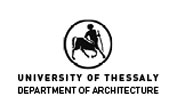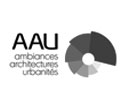6. Ambiance as heritage of the future
Can we make ambiance part of heritage? In other words, can we safeguard the ephemeral and intangible qualities of a place in order to transform it physically? Or, put another way, can we make a territory part of heritage through ambiance, i.e., transform certain physical aspects without destroying the spirit of the place and the way in which it "makes" territory?
We are familiar with the effects of folklorisation, dehumanisation or loss of authenticity that stem from over-exclusive comprehensive protective measures, radical changes in use or historical reconstructions that are just too perfect. We succeed in protecting the material itself but we have turned it into an image or a pure representation and we have destroyed the ambiance (take, for example, the use to which the notion is put in cultural tourism policies or in sensorial marketing).
But we also know of certain architectural reconversion or urban renovation projects that do succeed in preserving the quality of the original buildings or streets while also adding in the improvements necessary for contemporary day-to-day living. They reinforce a sensorial memory in line with the necessary evolution of societies and their edifices. So, is ambiance not the instrument par excellence for constituting the heritage of the future?
To put it another way, the contention underlying this thematic focus could be expressed as follows: "Constituting heritage" previously consisted of classifying "architectural objects" to protect their tangible substance; nowadays, it involves identifying "urban entities" in order to preserve their intangible substrate, and tomorrow it may very well consist in enhancing "territorial ambiances" to safeguard them over time through contemporary forms and lifestyles.
Important Dates
4 Jan. 2016:
Deadline for abstract submission
20 Fev. 2016:
End of review phase
25-26 Fev. 2016:
Feedback to authors
3 May 2016:
9 May 2016:
NEW Deadline for article submission
21-24 Sept. 2016:
Congress










